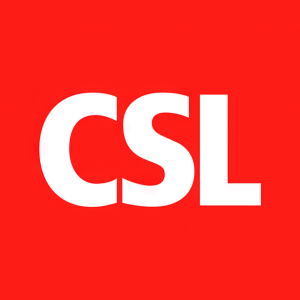Recent RWE Data Show Cell-Based Influenza Vaccines Offer 20% Greater Protection in the Prevention of Test-Confirmed Influenza in Pediatric and Adult Populations Relative to Standard Egg-Based Influenza Vaccines
Rhea-AI Summary
CSLLY (CSL Seqirus) announced real‑world evidence from the U.S. 2023/24 season showing cell‑based quadrivalent influenza vaccines had an estimated 19.8% relative vaccine effectiveness (rVE) versus standard egg‑based quadrivalent vaccines to prevent test‑confirmed influenza in ages six months to 64 years (106,779 vaccinated and tested patients; 95% CI 15.7–23.8%).
Sensitivity analyses and subgroup results (pediatric, adult, outpatient, high‑risk) were consistent. A modeled estimate suggests 14,930 additional hospitalizations could have been prevented if all vaccinated 6 months–64 years received cell‑based vaccines. Data were published and presented at IDWeek Oct 19–22, 2025.
Positive
- rVE 19.8% vs egg‑based vaccines (95% CI 15.7–23.8%)
- Analysis of 106,779 vaccinated, influenza‑tested patients
- 14,930 estimated additional hospitalizations averted in 2023/24 model
- Consistent protection across pediatric, adult, outpatient, high‑risk subgroups
- Findings represent fifth season of retrospective studies showing benefit
Negative
- None.
News Market Reaction 1 Alert
On the day this news was published, CSLLY declined 0.20%, reflecting a mild negative market reaction.
Data tracked by StockTitan Argus on the day of publication.
-
Real-world evidence (RWE) data estimate
19.8% relative vaccine effectiveness (rVE) of cell-based quadrivalent influenza vaccines (QIVc) versus standard egg-based quadrivalent vaccines (QIVe) in the prevention of test-confirmed influenza during the 2023/24U.S. season for populations six months to 64 years. 1 - Consistent rVE results were observed for pediatric, adult, outpatient and high-risk subgroups. 1
- This latest RWE represents the fifth season of large retrospective test-negative studies showing greater protection of cell-based influenza vaccines relative to standard egg-based influenza vaccines, elevating the standard of care for influenza prevention for pediatrics six months and older and adults up to and including 64 years. 1
These data were published in Infectious Diseases and Therapy earlier this month and will be presented at the IDWeek annual meeting taking place in
In collaboration with a leading infectious disease epidemiologist, CSL Seqirus performed a retrospective test-negative study of the relative vaccine effectiveness (rVE) of cell-based influenza vaccines relative to standard egg-based influenza vaccines in individuals six months to 64 years of age during the
The real-world evidence (RWE) study analyzed data from 106,779 vaccinated and influenza-tested patients, with analyses performed in the full population, as well as pediatric (six months to 17 years), adult (18 to 64 years), outpatient and high-risk subgroups. rVE was estimated using linked data from electronic health records, medical and pharmacy claims and laboratory tests in the
Findings from the full population showed greater protection of cell-based influenza vaccines compared to standard egg-based influenza vaccines in the prevention of test-confirmed influenza, with estimated rVE of
"These data from the 2023/24 season show the clinical benefit of cell-based influenza vaccines over standard egg-based vaccines, and they continue to be relevant as we enter this year's influenza season," said Gregg Sylvester, MD, Chief Health Officer and Head of Medical Affairs, CSL Seqirus. "Last year, we saw the worst flu season in 15 years and the highest number of pediatric deaths since the 2009 pandemic.2,3,4 Behind every statistic is a person, a family's loved one, and we must continue to consider real-world evidence as an educational tool to encourage safe and effective vaccination for all eligible people six months and older."
According to an estimation using a compartmental influenza burden averted model, if all vaccinated individuals aged six months to 64 years during the 2023/24 influenza season received cell-based influenza vaccines over standard egg-based, an additional estimated 14,930 hospitalizations would have been prevented.1
"Given the ever-changing nature of the influenza virus, RWE studies allow us to assess influenza vaccine effectiveness each season, which we can't reasonably do using clinical trials. This study adds a fifth season showing cell-based influenza vaccines over greater protection against medically-attended disease than standard egg-based influenza vaccines," said Sheena Sullivan, MPH, PhD, Associate Professor, Monash University,
Cell-based technology provides an exact antigenic match to the vaccine strain selected by the World Health Organization.5,6
"At CSL Seqirus, we're continually working to improve vaccine effectiveness and help safeguard the public. These RWE data suggest that the greater protection of cell-based vaccines compared to standard egg-based alternatives may allow healthcare providers to further reduce the burden of influenza on their patients," said Stefan Merlo, Vice President of Commercial Operations,
The CSL Seqirus
About the Study
Multiple real-world data sources were linked, including electronic health records, medical and pharmacy claims, and laboratory tests in
Study Limitations
The above study featuring RWE was subject to the typical limitations associated with retrospective analyses of RWE. Observational studies have limitations including the potential for selection bias and residual confounding. TND studies offer advantages over other observational studies and can provide reliable inferences on vaccine effectiveness in the real-world setting; however, they are not as definitive as Randomized Controlled Trials (RCTs) in establishing causality and are a complementary approach to clinical trials to assess seasonal influenza vaccine effectiveness. We recommend interpreting these results within a comprehensive evidence framework that includes various study designs for a well-rounded perspective on vaccine efficacy/effectiveness.
About Seasonal Influenza
Influenza is a common, contagious seasonal respiratory disease that may cause severe illness and life-threatening complications in some people.8 Influenza can lead to clinical symptoms varying from mild to moderate respiratory illness to severe complications, hospitalization and in some cases, death.8 Because transmission of influenza viruses to others may occur one day before symptoms develop and up to five to seven days after becoming sick, the disease can be easily transmitted to others.9 Preliminary estimates from the Centers for Disease Control and Prevention (CDC) report that during the 2024/25 influenza season, there were an estimated 610,000-1,300,000 influenza-related hospitalizations in the
About CSL Seqirus
CSL Seqirus is part of CSL (ASX: CSL). As one of the largest influenza vaccine providers in the world, CSL Seqirus is a major contributor to the prevention of influenza globally and a transcontinental partner in pandemic preparedness. With state-of-the-art production facilities in the
For more information about CSL Seqirus, visit CSL.com.
About CSL
CSL (ASX: CSL; USOTC: CSLLY) is a global biotechnology company with a dynamic portfolio of lifesaving medicines, including those that treat haemophilia and immune deficiencies, vaccines to prevent influenza, and therapies in iron deficiency and nephrology. Since our start in 1916, we have been driven by our promise to save lives using the latest technologies. Today, CSL – including our three businesses: CSL Behring, CSL Seqirus and CSL Vifor – provides lifesaving products to patients in more than 100 countries and employs 32,000 people. Our unique combination of commercial strength, R&D focus and operational excellence enables us to identify, develop and deliver innovations so our patients can live life to the fullest. For inspiring stories about the promise of biotechnology, visit csl.com/we-are-csl/vita-original-stories and follow us on x.com/CSL.
For more information about CSL, visit www.CSL.com.
Intended Audience
This press release is issued from CSL Seqirus in
Forward-Looking Statements
This press release may contain forward-looking statements, including statements regarding future results, performance or achievements. These statements involve known and unknown risks, uncertainties and other factors which may cause our actual results, performance or achievements to be materially different from any future results, performances or achievements expressed or implied by the forward-looking statements. These statements reflect our current views with respect to future events and are based on assumptions and subject to risks and uncertainties. Given these uncertainties, you should not place undue reliance on these forward-looking statements.
FLUCELVAX® (Influenza Vaccine)
IMPORTANT SAFETY INFORMATION
What is FLUCELVAX® (Influenza Vaccine)?
FLUCELVAX is a vaccine that helps protect people aged 6 months and older from the flu. Vaccination with FLUCELVAX may not protect all people who receive the vaccine.
Who should not
receive
FLUCELVAX?
You should not receive FLUCELVAX if you have a history of severe allergic reactions (e.g., anaphylaxis) to any component of the vaccine.
Before receiving FLUCELVAX, tell your healthcare provider about all medical conditions, including if you:
- have ever had Guillain-Barré syndrome (severe muscle weakness) within six weeks after getting a flu vaccine. The decision to give FLUCELVAX should be made by your healthcare provider, based on careful consideration of the potential benefits and risks.
- have problems with your immune system or are taking certain medications that suppress your immune system, as these may reduce your immune response to the vaccine
- have ever fainted when receiving a vaccine
What are the most common side effects of FLUCELVAX?
- pain and/or redness where the vaccine was given
- headache
- extreme tiredness
- muscle aches
Additional side effects seen in children include:
- tenderness, bruising and/or a raised hardened area where the vaccine was given
- sleepiness
- irritability
- diarrhea
- changes in eating habits
- feeling unwell (malaise)
These are not all
of the possible side effects of FLUCELVAX.
You can ask your healthcare provider for more information and for advice about any side effects that concern you.
What do I do if I have side effects?
Report any severe or unusual side effects to your healthcare provider.
To report SUSPECTED ADVERSE REACTIONS, contact CSL Seqirus at 1 - 855 - 358-8966 or VAERS at 1‐800‐822‐7967 or www.vaers.hhs.gov.
Before receiving this vaccine, please see the full US Prescribing Information for FLUCELVAX . You can ask your healthcare provider or pharmacist for information about FLUCELVAX that is written for healthcare professionals.
MEDIA CONTACT
Melanie Kerin
+44 7345 433260
Melanie.Kerin@Seqirus.com
1 Stein, A., et al. Estimated Relative Effectiveness and Public Health Impact of Cell-Based Versus Egg-Based Influenza Vaccines During the 2023–2024 Season in
2
3 CDC. Preliminary Estimated Flu Disease Burden 2024-2025 Flu Season. Retrieved from: https://www.cdc.gov/flu-burden/php/data-vis/2024-2025.html. Accessed October 2025.
4 CDC. Influenza Activity in
5 Rockman, S., Laurie, K., Ong, C., Rajaram, S., McGovern, I., Tran, V., & Youhanna, J. (2023). Cell-Based Manufacturing Technology Increases Antigenic Match of Influenza Vaccine and Results in Improved Effectiveness. Vaccines, 11(1), 52. https://doi.org/10.3390/vaccines11010052.
6 CDC. Cell-based flu vaccines. https://www.cdc.gov/flu/vaccine-types/cell-based.html. Accessed October 2025.
7 CDC. Terms for vaccine effectiveness. Retrieved from: https://www.cdc.gov/covid/php/surveillance/vaccine-effectiveness-studies.html. Accessed October 2025.
8 CDC. Key Facts about Influenza. Retrieved from: https://www.cdc.gov/flu/vaccines/keyfacts.html. Accessed October 2025.
9 CDC. About Influenza. Retrieved from: https://www.cdc.gov/flu/about/index.html. Accessed October 2025.
10 CDC. Who Needs a Flu Vaccine and When. Retrieved from: https://www.cdc.gov/flu/vaccines/vaccinations.html. Accessed October 2025.
SOURCE CSL Seqirus








